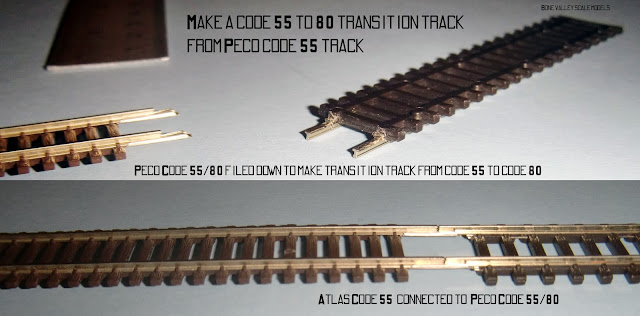If buying products on Amazon please use one of my links, like this one that shows what N scale track Amazon has: n scale track
Micro-Engineering code 55
Pros:
- Long 36”
- Small spikes
- Prototypical US tie spacing and tie width (close enough anyway)
- Somewhat hard to bend into smooth curves
- Plastic flashing is somewhat common
- Somewhat fragile
Atlas code 55
Pros:
- Easy to bend into smooth curves
- Prototypical US tie spacing and tie width
- Short 30”
- Spikes are too big and interfere with wheel flanges on older equipment. But not really an issue if you just have newer equipment made in the last decade or so.
Atlas code 80
Pros:
- Cheapest
- Easiest to find
- Easy to bend into smooth curves
- Not prototypical US tie spacing or spikes
- Short 30”
Peco code 55
Pros:
- Long 36”
- Uses code 80 rail embedded in the ties…making it sturdy
- Not prototypical US tie spacing or spikes
https://amzn.to/2MZ0fwU
https://amzn.to/2ZvbHlo
Central Valley Model Works (CVMW) N Code 55 Curvable Mainline Ties.
Pros:
- Unlimited length
- Ties can be painted and ballasted before the rails are applied making variation in tie color easier to achieve (especially if a masking template is constructed) and the rail can easily be painted a slightly different color than the ties
- Long stretches of Micro Engineering code 55 rail can be soldered together before being applied to the ties
- No glue required to attach the rail
- The ties vary a bit in length which is true to a lot of prototype track (especially older track) but not necessarily true in all cases
- You still have to buy Micro Engineering code 55 rail

Kato Unitrack
Pros:
- Reliable
- Reconfigurable
- The rail is code 80
- Not prototypical US tie spacing or spikes
- The ballast is part of the track which can be a pro or a con, but it is a con if prototype accuracy is the objective.
3D Printed Track?
Finally, I just wanted to mention that I played around with 3D printing some code 40 track. I did this because there is some track I wanted to put on my layout to make it true to the prototype, but I didn’t need it to be functional. So, at about 10 cents a foot, this 3D N scale code 40 track does the trick just fine, especially since it allows me to make custom track such as very long turnouts in code 40 rail that aren’t commercially available. As technology gets better, dead rail battery powered locomotives on cheap 3D printed track may be a viable solution for some applications.
Code 40 N Dummy Track 3D Printed in PLA
If buying products on Amazon please use one of my links, like this one that shows what N scale track Amazon has: n scale track
If buying products on Amazon please use one of my links, like this one that shows what N scale track Amazon has: n scale track
Originally posted 1/10/16. Updated 3/19/18.






